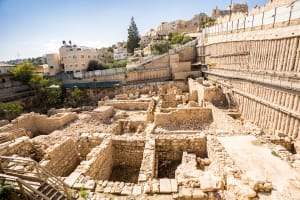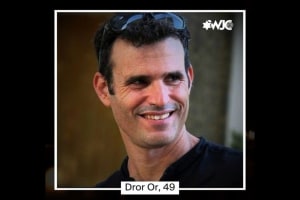Why is the City of David outside the walls of the Old City of Jerusalem?
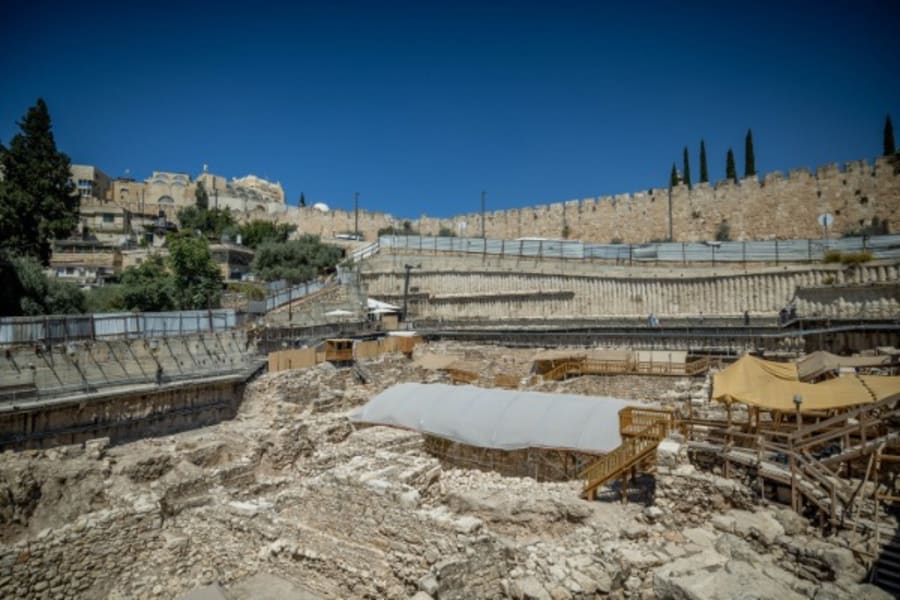
If you've visited Jerusalem or peeked at a map of the city, you might find it slightly confusing to realize that the area known as "the City of David" is actually located outside the walls of the Old City.
In addition, the Tower of David is situated right at the Jaffa Gate entrance to the Old City, while the tomb of David is on Mount Zion, also just outside the city walls.
This raises questions about the authenticity of these names, including how many of them are made up and how many rely on historical misconceptions and legends.
Whenever we speak of Jerusalem, “the Old City” is the area surrounded by an ancient wall, and until the 1850s, this was all that Jerusalem was. After 1850, Jerusalem expanded beyond the walls and, with time, even “swallowed up” some surrounding villages that became Jerusalem neighborhoods. Knowing this, it’s easy to think that all of Jerusalem’s ancient history prior to 1850 was contained within these walls.
But you’d be wrong. Throughout its history, Jerusalem’s walls have been razed and rebuilt dozens of times, every time in slightly different locations, up until the current walls were built in 1541. Areas that are currently within the walls were once outside and vice versa.
This is where the City of David comes in. Out of the three sites mentioned above containing the name “David,” the City of David is the only authentic one. The tiny little hill, just south of the Temple Mount, completely outside the walls of the Old City – this is the original Jebus of the Canaanite era and the city that David conquered to make his capital in 1003 B.C.
The Temple Mount, or Mount Moriah, was outside of the city and owned by a man named Araunah, and it was his threshing floor. Only later during his reign did David purchase the field and dedicate it as the spot where the temple would be built. (2 Samuel 24).
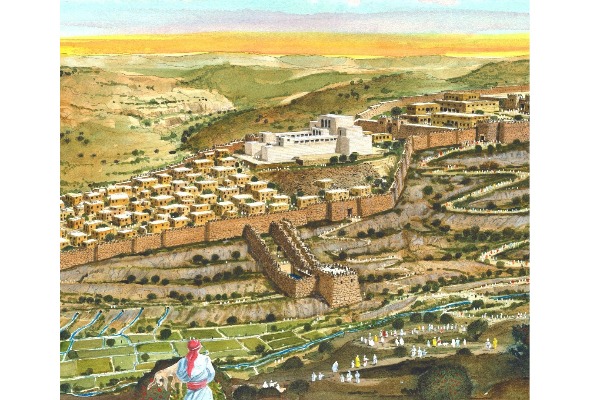
When David wrote: “As the mountains surround Jerusalem, so the Lord surrounds his people,” it was this Jerusalem that he was referring to. Standing at the northernmost peak of the City of David, where a significant compound believed to be the palace of David has been discovered, you can clearly see how it is encircled by mountains. You have the Temple Mount to your north – the mountains today known as neighborhoods Abu Tur – and then Armon HaNatsiv to the south, the mountain of the Silwan village to your east, the Mount of Olives to your northeast, and the mountain known today as Mount Zion to your west.
King Solomon built the temple on the Temple Mount and expanded the walls to include it. At this point, the shape of Jerusalem would have looked a bit like Italy – a long “boot” that’s a bit thicker at the north, around the temple compound, and narrowing off toward the south, following the shape of the hill. A few centuries later, the city expanded to the west and encompassed a small part of today’s Old City, which is why the prophetess Hulda is described as living “in the new quarter” in 2 Kings 22:14. It is also why you can see a remnant of that ancient wall in the middle of the Jewish quarter inside the Old City.

The Babylonians destroyed everything completely Who rebuilt the walls of the city after the exiles returned? If you know your Bible, you’ll remember that this is the main story in the Book of Nehemiah. Based on the description, it seems like Jerusalem took the form of “Italy boot” at this point. But then, from the time of Nehemiah, the Hellenistic era came with Alexander the Great, and Jerusalem expanded; first under the Ptolemaic Kingdom, then the Seleucid Kingdom, and finally the independent Hasmonean Kingdom.
From the Hasmonean era, it seems the City of David became the old area – the lower city – while the new areas to the north and became the upper city, with housing for richer people. By the Roman era, Josephus Flavius describes a first, second, and third wall. The first wall was probably built during the era of the Hasmoneans, and it encompasses the City of David, the area to the west of it, and goes a bit north to include less than half of today’s Old City – these are the parts known today the Jewish and the Armenian Quarters.
The northwestern corner of the city at this time appears to have been where the Jaffa Gate is found today. This might have been when the citadel was built. Today, that is known as the “David Citadel,” but it's a name invented by the Byzantines – most probably used by King Herod.
The mountain mentioned earlier, which is today known as Mount Zion, would have been inside the city at this point, as well. In the Bible, “Mount Zion” is a synonym for Jerusalem, but the name might have moved to this specific hilltop at this time, too. Tradition puts King David’s Tomb at the location, but there is 'zero' historical or archaeological evidence for it.
The second wall was to the north, and was completely inside today’s Old City, encompassing most of what is today the Muslim Quarter.

So, Jerusalem at the time of Jesus included the City of David, Mount Zion, and the Temple Mount, along with the Armenian, Jewish and Muslim quarters of the Old City. This means that the area known today as the Christian Quarter of the Old City, in the northwestern part of the city, would have been almost completely outside the city at the time of Jesus. This makes sense since Golgotha was indeed outside the city and today, the site of Golgotha – the Church of the Holy Sepulchre – is in the heart of the Christian Quarter.
The third wall was built during the time of Herod Agrippa I – the man who killed the Apostle James and put Simon Peter in prison – and it was finished shortly before it was destroyed. It included Golgotha and reached far – much farther north than today’s Old City walls. In fact, there are remnants of this wall next to the Mandelbaum Gate gas station near the Sheikh Jarrah Neighborhood, north of the Old City.
So, from a tiny hill south of today’s Old City, the city grew to the north to include the entire present-day Old City, and even more to the north.
And then the Romans razed the city to the ground.
In 70 A.D., Jerusalem was completely destroyed, and if anything was left, it was destroyed even more after the Bar Kochba Revolt in 132 A.D. The Romans built a pagan city, Aelia Capitolina, on its ruins, and set up pagan temples on both the Temple Mount and on Golgotha. This city didn’t even have any walls initially, but something was probably set up at the end of the 3rd century.
After the Romans became Christian Byzantines, and Jerusalem got its old name back, the Empress Aelia Eudocia renewed the walls in the 5th century. By this time, the walls still included the City of David and the original southern parts of Jerusalem, stretching all the way north to encompass most of today’s Old City.
It appears that the Muslim conquest in the 7th century did not result in the walls being altered much, but it marks the first time since 132 A.D. that Jews were allowed back into the city. And it seems that the City of David became a Jewish neighborhood at this time.
When the walls fell in the earthquake of 1033, the Muslims who rebuilt the walls neglected the southern parts, keeping the City of David and Mount Zion outside the walls for the first time, following the pattern of today’s Old City walls. Why did they do this?
Well, the fact that the City of David was “the Jewish neighborhood” and that Mount Zion had numerous churches might provide a clue. They weren’t that interested in safeguarding the infidels. A few decades later, the Crusaders came, in 1099, and killed every Muslim and Jew in Jerusalem – without destroying the walls. Jerusalem became the Christian capital of the Crusaders' Kingdom, and the “David Citadel” became the seat of Jerusalem’s Crusader royal court.
When Saladin conquered Jerusalem from the Crusaders in 1187, the walls were in bad shape. They had been damaged and repaired multiple times, so eventually his nephew ordered a vast rebuilding of the walls in the early 13th century. And then he changed his mind.
Fearing that the Crusaders might come back, and not wanting them to have strong fortified walls, he ordered the walls to be demolished in 1219. Jerusalem was left without any walls at all for about three centuries, making it easy prey for a few Mongol raids in 1260 and 1300. Maps produced by pilgrims in the 15th century show a city without walls. The only secure parts at this time were the walled Temple Mount area and the David Citadel.
Sultan Suleiman the Magnificent – the same sultan who besieged Vienna in 1529 and lost to the winged hussars – also rebuilt the walls of the Old City in Jerusalem between 1537 and 1541. According to legend, he had a dream where two angry lions were about to eat him because he had neglected the holy city. He ordered the walls built and had one of the gates adorned with the lions from his dream – today called the Lions' Gate.
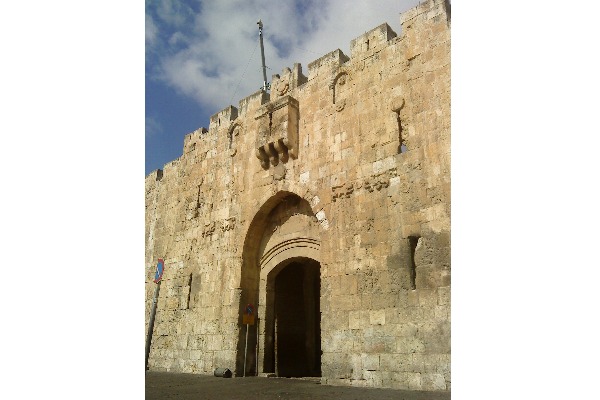
These walls largely followed the same pattern as the previous fortifications, leaving both the City of David and Mount Zion outside. This was because the knowledge that the small southeastern hill, Wadi Hilweh, was actually the original City of David had been lost over time. It wasn't until the 19th century that British archaeologists rediscovered it.
Up until the early 20th century, the city's gates were closed each night and reopened in the morning. However, as more neighborhoods began to develop outside the walls starting in the 1850s, it became redundant.
In the 1800s, a few new gates were created, and in 1898, a part of the wall next to the Jaffa Gate was breached to make room for Kaiser Willhelm II’s vehicle escort. This opening in the wall is still being used as a vehicle entrance into the Old City.
Jerusalem's walls have undergone multiple cycles of destruction and reconstruction over the years, yet the existing structures appear to be the final versions. They are now recognized as a UNESCO World Heritage site and serve no military purpose, functioning solely as historical and memorial landmarks.
The actual city of Jerusalem has expanded far beyond the Old City at this point. When Israeli forces conquered the Old City of Jerusalem in 1967, Israel's founder, David Ben Gurion, was in favor of destroying them altogether. Luckily, no one listened to him. The current walls of Jerusalem are here to stay.
Until the next earthquake.

Tuvia is a Jewish history nerd who lives in Jerusalem and believes in Jesus. He writes articles and stories about Jewish and Christian history. His website is www.tuviapollack.com




